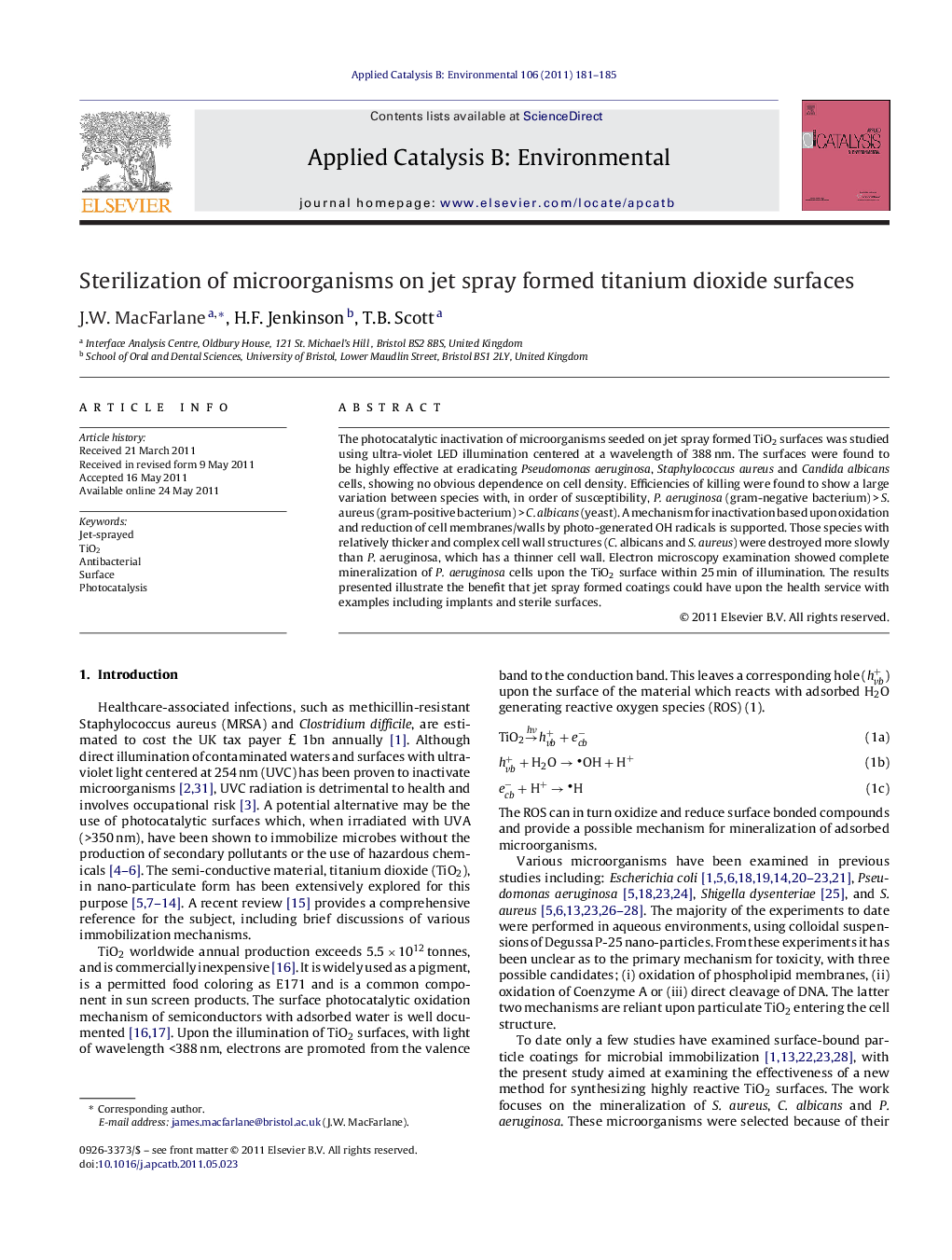| کد مقاله | کد نشریه | سال انتشار | مقاله انگلیسی | نسخه تمام متن |
|---|---|---|---|---|
| 47059 | 46457 | 2011 | 5 صفحه PDF | دانلود رایگان |

The photocatalytic inactivation of microorganisms seeded on jet spray formed TiO2 surfaces was studied using ultra-violet LED illumination centered at a wavelength of 388 nm. The surfaces were found to be highly effective at eradicating Pseudomonas aeruginosa, Staphylococcus aureus and Candida albicans cells, showing no obvious dependence on cell density. Efficiencies of killing were found to show a large variation between species with, in order of susceptibility, P. aeruginosa (gram-negative bacterium) > S. aureus (gram-positive bacterium) > C. albicans (yeast). A mechanism for inactivation based upon oxidation and reduction of cell membranes/walls by photo-generated OH radicals is supported. Those species with relatively thicker and complex cell wall structures (C. albicans and S. aureus) were destroyed more slowly than P. aeruginosa, which has a thinner cell wall. Electron microscopy examination showed complete mineralization of P. aeruginosa cells upon the TiO2 surface within 25 min of illumination. The results presented illustrate the benefit that jet spray formed coatings could have upon the health service with examples including implants and sterile surfaces.
Figure optionsDownload as PowerPoint slideHighlights
► Jet sprayed nano TiO2 surfaces under UV illumination show rapid destruction of microorganisms.
► Sterilization shows pseudo first order kinetics, faster than previously studies.
► Rate is relatively independent of microbial cell density within the limits examined.
► ROS mechanism proposed as inactivation rates correlated with accessibility of plasma membrane.
Journal: Applied Catalysis B: Environmental - Volume 106, Issues 1–2, 21 July 2011, Pages 181–185